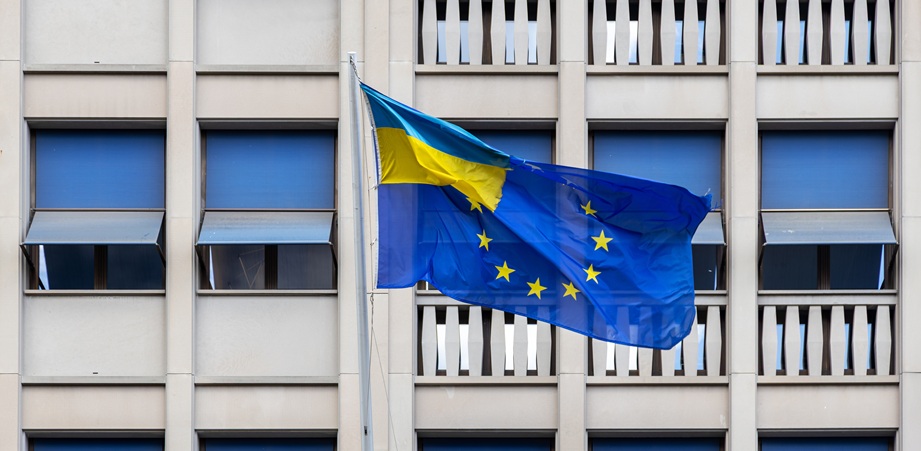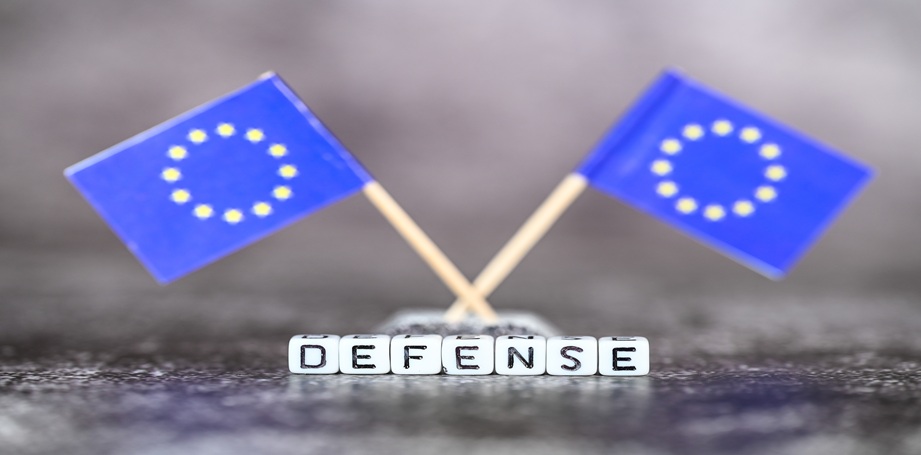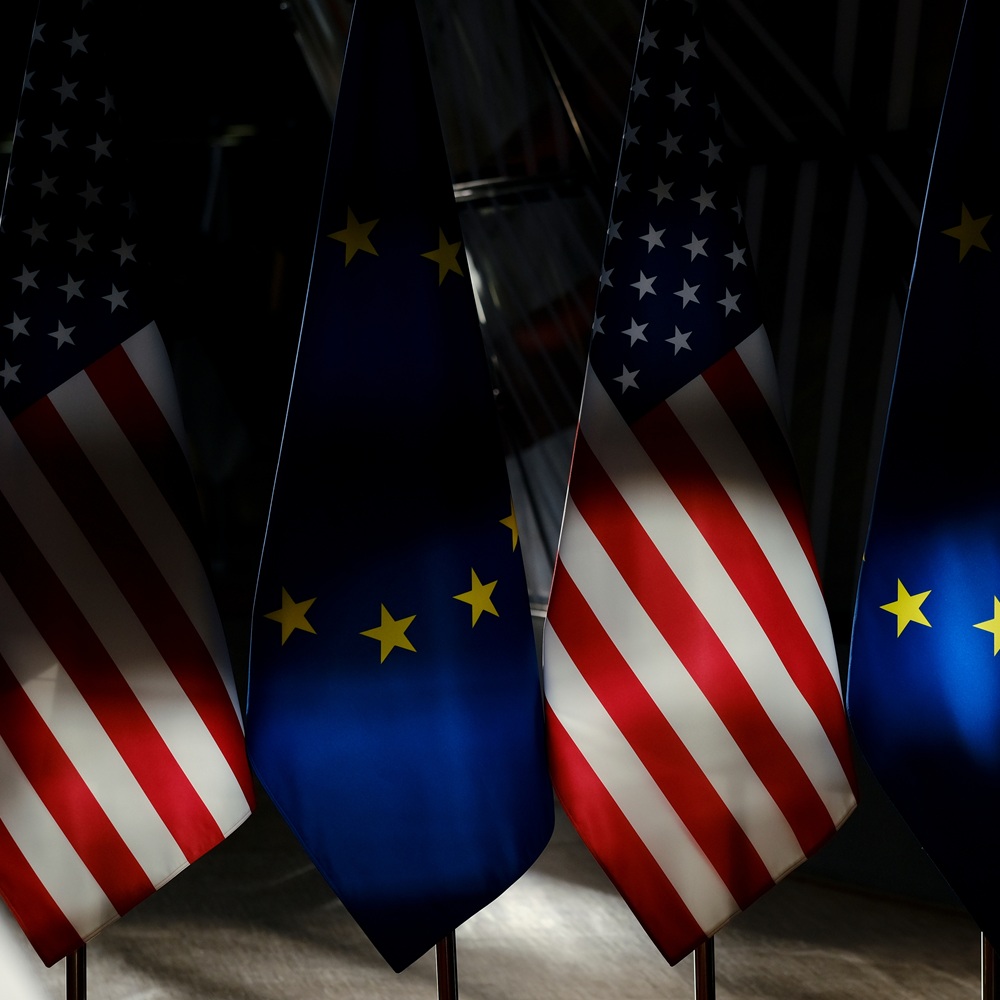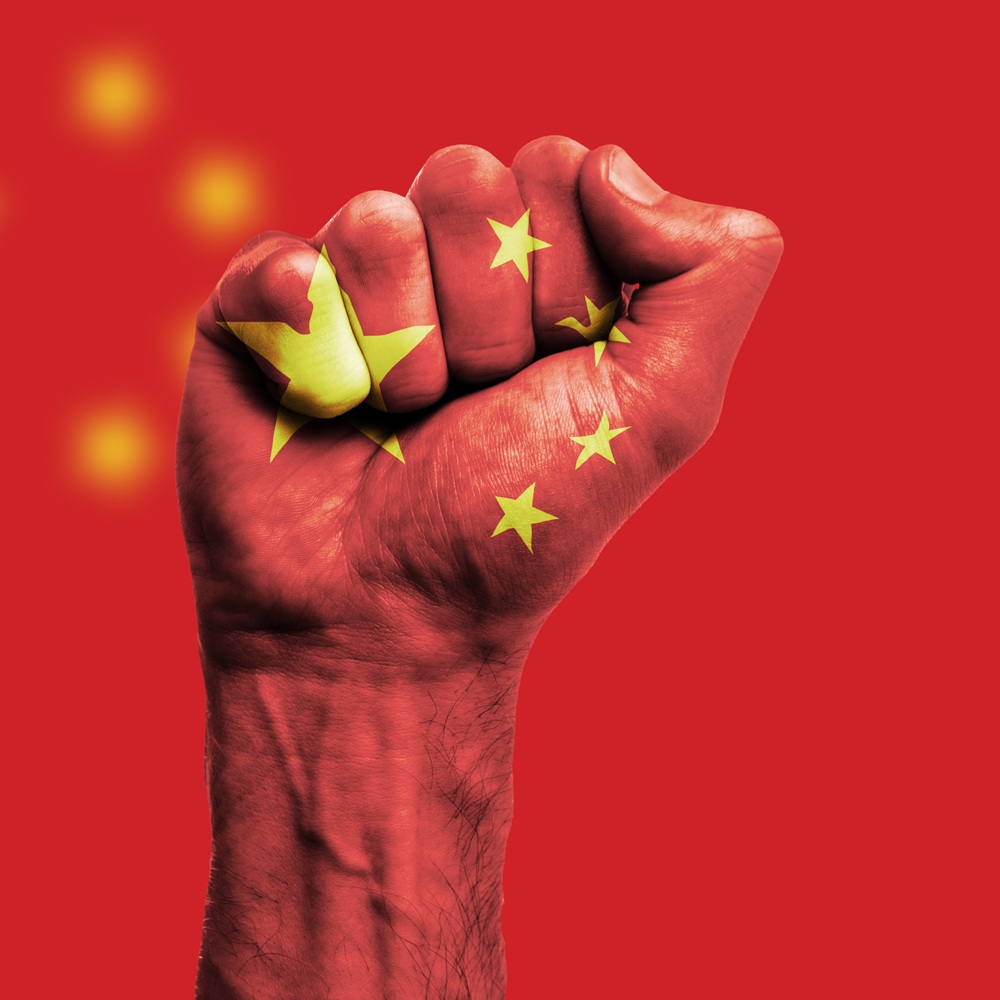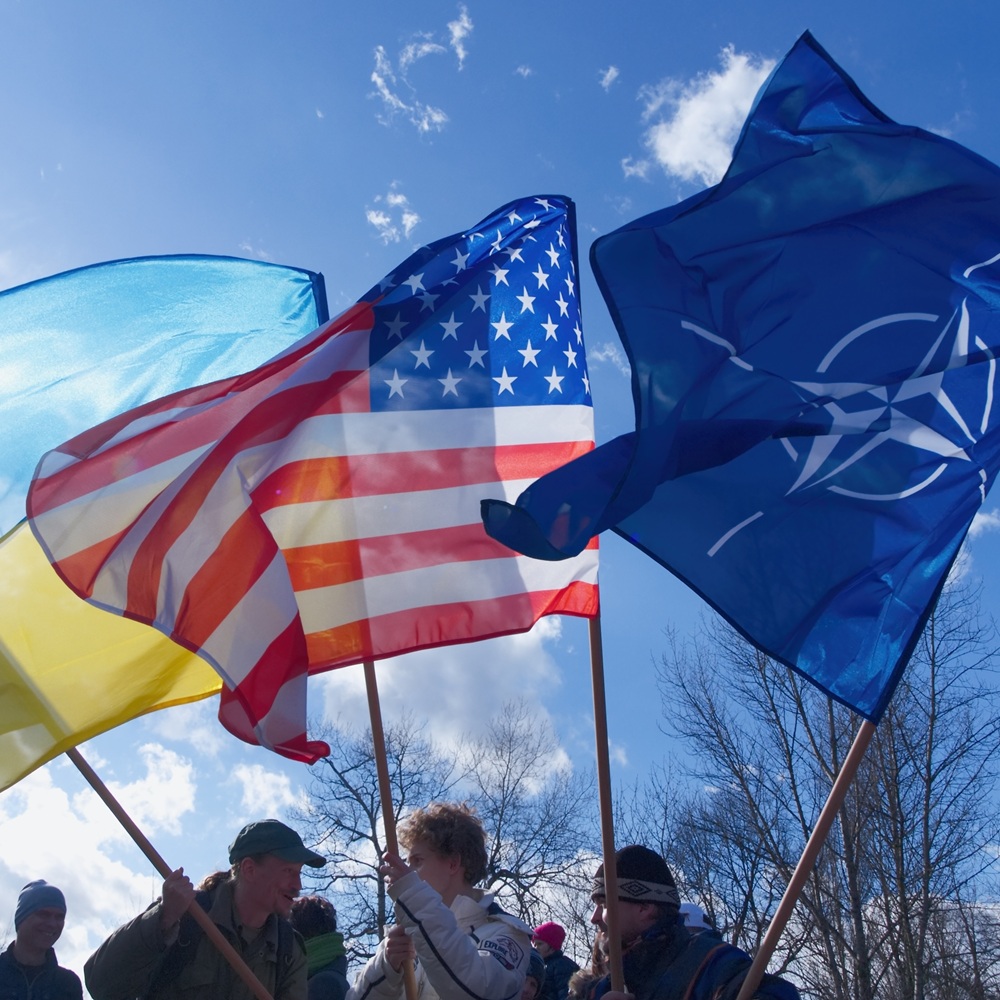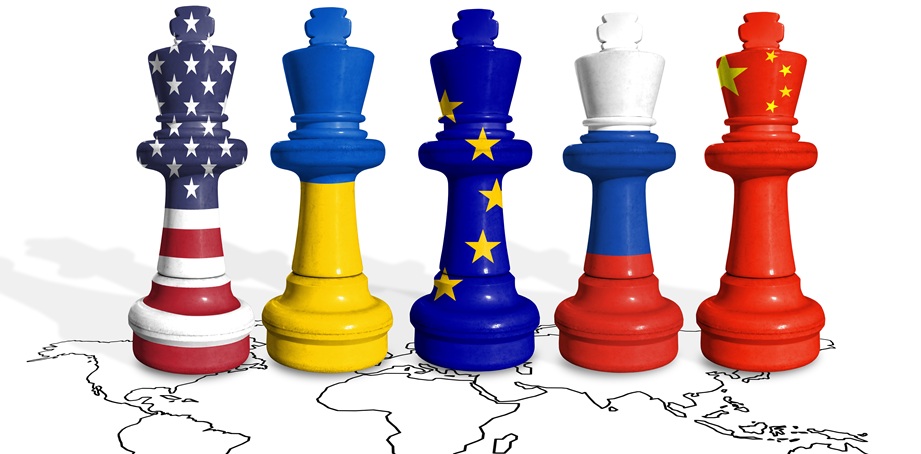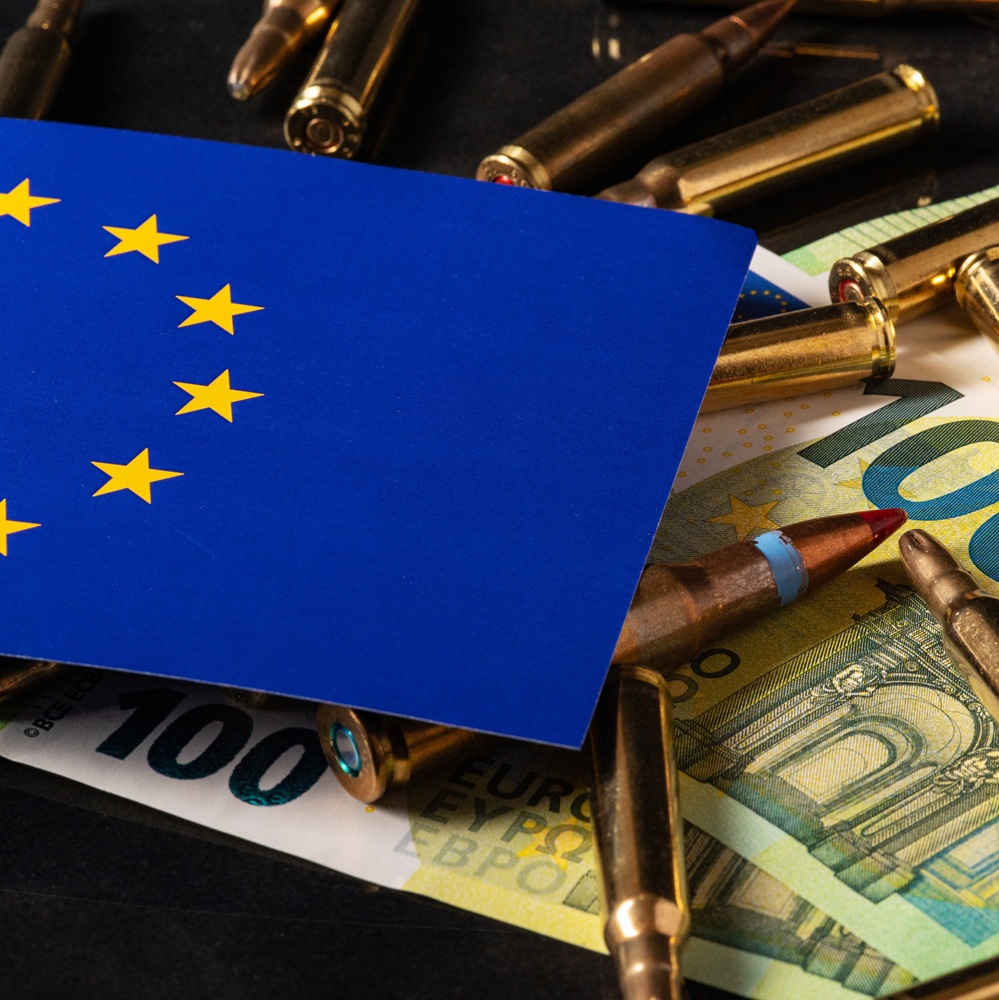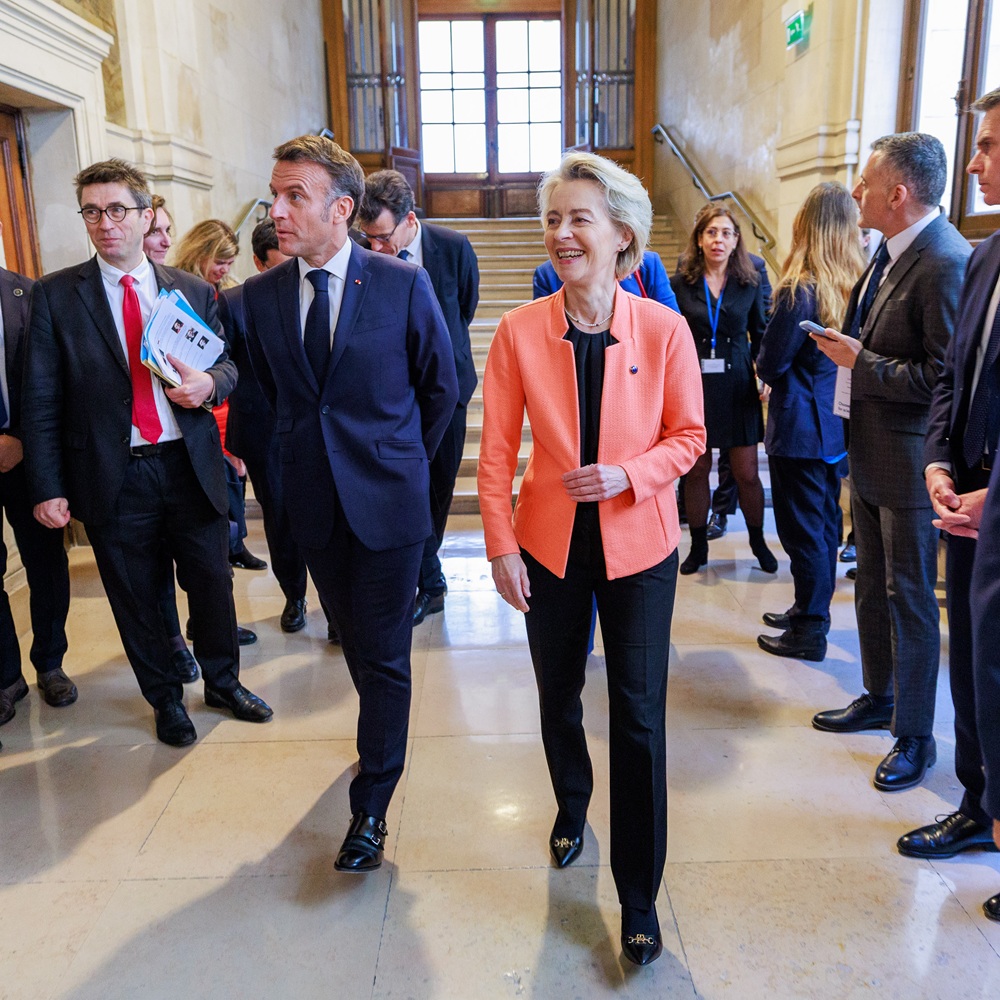
Europe’s transatlantic China challenge
by Gesine Weber
Abstract European states currently lack a clear joint strategy on China and a coordinated approach to US–China competition. This article offers a novel perspective on the challenges for European approaches to this issue due to an omnipresent transatlantic component and the risk of an alliance dilemma. Illustratively focusing on France, Germany and the UK, it demonstrates that Europeans are facing a transatlantic alliance dilemma with the risks of abandonment and entrapment. It argues that Europe needs to strike a balance between its dependence on Washington, especially with regard to European security, while fearing entrapment by the US approach towards Beijing as it aims to maintain economic ties with China. The article concludes that the ramifications of this dilemma can be mitigated through a distinctly European approach to China, strengthening European coordination on China and bolstering European strategic autonomy. As a conceptual piece rather than a full empirical analysis, this article therefore unpacks the strategic challenge and lays the groundwork for further empirical works on the topic. Introduction Strategic competition between the US and China plays out in many realms of international affairs, ranging from global trade to security in the Indo-Pacific. European states are directly affected by this dynamic as they maintain critical ties with both sides. Albeit allies of the US through NATO, Europeans have been reluctant to align with the US on its approach to the Indo-Pacific and China, which is currently characterised by the quest to win the strategic competition with Beijing in all areas of international affairs (see Leoni 2023). Furthermore, Europe maintains close economic ties with Beijing, and imports from China to the EU have most recently increased (Lovely and Yan 2024). European governments certainly do not pursue an approach of maintaining equidistance between the US and China: not only do they regularly emphasise their strategic proximity to Washington, but more recent events, such as the willingness of European allies to publicly adopt the wording of the communiqué from NATO’s Washington summit (NATO 2024) describing China as an ‘enabler of Russia’s war effort in Ukraine’, clearly demonstrate that the tone is changing in European capitals (Politi 2023). However, Europeans still tend to emphasise China’s role in global affairs and the importance of including it in multilateral cooperation formats. With the re-election of Donald Trump as US president, European policy on China and its approach to US–China competition will increasingly be a focus of the US administration. While the exact approach of the new US government still remains to be defined, there are good reasons to anticipate a more hawkish China policy from Washington, through which the US might seek not only to further compete with China, but to actually win this competition (see Pottinger and Gallagher 2023). When designing their approaches towards China—which, among the key European states, only Germany has done so far, with the publication of its China strategy in 2023—Europeans always face a transatlantic elephant in the room. US–China competition, a structuring feature of international relations shaping the global order today through the increasing emergence of geopolitical blocs (see Leoni and Tzinieris 2024), and China’s rising global influence in almost all areas of international affairs—ranging from climate to economics, the rules-based order and security—are forcing European states to reflect on their approach vis-à-vis Beijing (for a full discussion, see Oertel 2023; García-Herrero and Vasselier 2024). As NATO members, European states also need to adapt their strategy in light of the partnership with the US as their key ally. This article argues that European approaches towards China, as shown in the examples of France, Germany and the UK, have a distinctly transatlantic component. It illustrates how these three European states find themselves in an alliance dilemma with the US, and how the risks associated with alliances also define European approaches to China and US–China competition more broadly. As the US administration regularly refers to China as a ‘challenge’ (US Department of Defense 2022), this article alludes to this formulation through the coining of the term ‘transatlantic China challenge’ to describe the strategic challenges Europeans are facing with regard to defining their approach vis-à-vis China and US–China competition more broadly. It offers a conceptual understanding of the strategic challenges for Europe in this context and thereby constitutes a basis for a more thorough empirical analysis. The alliance dilemma and European strategy in US–China competition Originating in realist international relations theory, the alliance dilemma generally describes a situation in which states face risks resulting from joining an alliance. As demonstrated by Snyder (1984), smaller allies especially face a parallel risk of abandonment and entrapment by a hegemon, that is, the dominating power, after joining an alliance. Abandonment, in these circumstances, implies that the hegemon has no further interest in defending or supporting the smaller allies, whereas entrapment refers to a situation in which a state is ‘dragged into a conflict over an ally’s interests that [it] does not share, or shares only partially’ (see Snyder 1984, 466–8). In the context of alliances, a small state is ‘the weaker part in an asymmetric relationship, which is unable to change the nature or functioning of the relationship on its own’ (Wivel et al. 2014, 9), and hence has more limited space for action than the great powers (Wivel and Thorhallsson 2018, 267). This definition arguably applies to Europe in its partnership with the US, as demonstrated by the excessive military and economic dominance of the US as compared to the European states (see Stockholm International Peace Research Institute n.d.; International Monetary Fund 2025). The re-election of Trump as US president now presents the risk of an increased alliance dilemma for Europeans. On the one hand, Trump has announced several times that he does not value the alliance commitments within NATO and potentially would not defend European allies (Sullivan 2024), threatening Europe with abandonment. This scenario is being taken seriously in European capitals, and reflections on how ‘defending Europe with less America’ (Grand 2024) could shape up have gained traction, especially in 2024. Similarly, defence initiatives within the EU to enhance the European contribution to the continent’s security have leapt forward in recent years (see Scazzieri 2025). On the other hand, even the Biden administration had pushed Europe to align with the US approach on China (see Lynch et al. 2023). However, France and Germany in particular, as the big EU member states, have been hesitant to do so, as reflected in France’s opposition to the opening of a NATO liaison office in Tokyo (McCurry 2023) and Germany’s vote against tariffs on Chinese electric vehicles, fearing reprisals from Beijing (Demarais 2024). Trump’s foreign policy might be strongly characterised by issue linkage, which means that policies in one area will be linked to those in another area. Through this strategy, the new US administration might force Europeans into alignment and thereby entrap them, making them accept policies they are not eager to support (see Barkin and Kratz 2025). The exact policies of the Trump administration vis-à-vis European allies remain to be seen, but it is not hard to imagine a scenario in which abandonment and entrapment could emerge or increase, namely when the threat of abandonment is used to entrap allies and force them to support certain policy decisions. The alliance dilemma could play out for Europeans specifically when designing their approaches towards China (see Barkin and Kratz 2025) and formulating their response to US–China competition more generally. As noted above, among the big European states, only Germany has formally adopted a strategy on China, in 2023 (The Federal Government of Germany 2023). However, China and the response to US–China competition takes a prominent place in France’s Indo-Pacific Strategy and its strategy review (Government of France 2021; Secrétariat général de la défense et de la sécurité nationale 2022), and the UK systematically included the dimension of strategic competition in its Integrated Review and its refresh (Government of the United Kingdom 2021, 2023) and has announced an ‘audit’ of its China policy under the new government (Taylor 2024). While these strategies emphasise their individual approaches towards China and the risks stemming from US–China competition, the US has increasingly pressured Europe to align with its approach (Lynch et al. 2023) and can be expected to continue this pressure (Barkin and Kratz 2025). Through the potential issue linkage of security (openly questioned by President Trump) and China policy, Europe therefore finds itself in a new form of alliance security dilemma. European approaches to US–China competition: strategic hedging How can Europe respond to the alliance dilemma of the risks of abandonment and entrapment when it comes to its approaches to China? Reviewing the theoretical literature on the alliance dilemma, one can imagine different strategies. According to Snyder, members of alliances can choose between strategies that strengthen or weaken their commitment to the alliance. To demonstrate commitment, actions could include reassurances for the ally or demonstrations of loyalty, whereas actions to weaken the commitment to the alliance could consist of restraining the ally (mostly to reduce the risk of entrapment in a conflict), increasing bargaining power over the ally or preserving options for realignment outside the existing alliance (for a full discussion, see Snyder 1984, 466–9). Alternative strategies include hiding from cooperation, that is, ‘seeking to maximize autonomy by opting out of specific aspects of the cooperation or by setting up “bastions” in the cooperation’, or bandwagoning, through which states pursue strategies of adaptation ‘to the more powerful actors in the cooperation’ (Pedersen 2023, 442). At the moment, it seems that France, Germany and the UK ‘drive on sight’ rather than approaching the question holistically. The following analysis aims to unpack how the three European states see US–China competition, the risk of the alliance dilemma and how these reflections have played out so far in their strategies. The strategies of France, Germany and the UK on China demonstrate that their approaches are influenced by a distinctly transatlantic component and reflect the transatlantic alliance dilemma. This is visible in their (1) high awareness of the risks stemming from great power competition, (2) approaches to managing the risk of short-term abandonment, and (3) hedging to mitigate the medium- and long-term risks of abandonment and entrapment. The empirical evidence for this analysis was gathered through a qualitative analysis of European strategic documents, statements and policy decisions taken mostly during the period of the Biden administration. However, in light of the risk of a scaling-up of the alliance dilemma under the Trump administration, sources and evidence accessible by the end of January 2025 were included to illustrate the European approaches. In addition to publicly available documents and the sources mentioned above, this paper draws on conversations with policymakers and experts under the Chatham House rule. Mitigating risks from US–China competition: multilateralism instead of alignment That France, Germany and the UK are close allies with the US is clearly visible in their respective strategies on China, not least because of references they make to the importance of the alliance and their descriptions of their own positions between the two great powers. Overall, France, Germany and the UK share the perception of US–China competition and the emergence of blocs as potentially harmful to their interests. As a consequence, all three call for an inclusive multilateral order instead of falling into a logic of blocs, as the increasing competition is seen as a risk for Europe (Secrétariat général de la défense et de la sécurité nationale 2022, 9–15; The Federal Government of Germany 2020, 24–6; Government of the United Kingdom 2023, 22–6). The response of all three European powers to the emergence of blocs is multilateralism: instead of clearly aligning with the US, the French, German and British strategies call for building broader multilateral coalitions, which should, eventually, also include China (The Federal Government of Germany 2020, 23–6; Government of the United Kingdom 2023). The tone in Paris, Berlin and London towards Beijing has clearly changed over recent years; accordingly, the European capitals were also willing to support strong wording on China in the 2024 NATO summit declaration, which describes China as a ‘critical enabler’ of Russia’s ongoing war against Ukraine (NATO 2024). Albeit also recognised as a critical partner for key issues such as climate policy and trade, European states openly describe China as a ‘systemic rival’ and occasionally call out China’s behaviour, as they did, for example, in the case of a note verbale on the South China Sea (UN 2020). Nevertheless, Europe has not (yet) given in to US pressure to align with Washington’s more confrontational approach towards China (Etienne 2024). Even if European states and Washington have moved closer to each other, especially on economic security (Meyers and Reinsch 2023), the European positions on US–China competition demonstrate that Europeans are not willing to fully endorse or follow Washington’s approach—not least because European imports from China have increased in recent years (Lovely and Yan 2024). Managing the risk of short-term abandonment Since Trump’s election, the risk of abandonment by the US has been seen as increasingly high in Paris, Berlin and London.1 This is not least because Trump has openly questioned his willingness to adhere to Article 5 of the North Atlantic Treaty in the case of an armed attack on Europeans (Sullivan 2024). Europeans are especially concerned about issue linkage in this context, meaning that demands in a policy area other than security could be used as a condition. Concretely, Trump could use the threat of abandonment as leverage to compel Europe to align with the US on China policy.2 Barkin and Kratz (2025) suggest that Europe adopt a ‘carrot and stick’ approach, whereby Europe could start with an offer to the US: buying more liquified natural gas, defence goods and agricultural products from the US could mitigate the risk of abandonment. However, there is awareness among European states that coercion from the US to align on US–China policy, especially when linked to the threat of abandonment, might best be mitigated through enhancing European military capabilities—which would still leave the continent exposed to these threats, though to a lesser extent.3 Addressing the risk of medium- and long-term abandonment and entrapment: transatlantic hedging However, the risk of at least partial abandonment is not a new challenge for European strategy, and had already infused earlier strategic thinking. The shift of US strategic priorities away from Europe and to the Indo-Pacific has already been demonstrated in the allocation of resources to the different theatres. Moreover, European states have increasingly become aware that US forces will be withdrawn from their territories in the future and have concluded that they will have to step up their own commitment to European security (see Grand 2024). In parallel, there is an awareness in European capitals that showing more interest in the Indo-Pacific and giving more importance to policy on China is also a way for Europeans to demonstrate an understanding of their ally’s strategic priorities.4 Accordingly, the approaches of France, Germany and the UK to China and the Indo-Pacific also have to be understood as a commitment to the priorities of the US in order to keep this ally engaged in the European theatre and mitigate the risk of abandonment; however, European states abstain from fully aligning with the US approach, as their capabilities and strategic goals are perceived as diverging from those of the US. In this way, Europe aims to avoid entrapment over the medium term through slightly distancing itself from US policy. While all three European states also call for de-risking from China and diversification of their supply chains, maintaining strong economic ties with Beijing is a key component of their respective approaches—which contrasts with the US calls for decoupling. Furthermore, these states have never formally endorsed the US policy on China (Etienne 2024). Nevertheless, enhancing European capabilities would not only send a signal to Washington, but also qualify as hedging, understood as an ‘insurance policy’ to avoid a deterioration in US–Europe relations if the US opted for abandonment, or even as part of a move towards emancipation to reduce strategic dependencies on Washington (see Fiott 2018, 4–6). Conclusion: a transatlantic China challenge Designing their approaches to China and to US–China competition more broadly constitutes a complex strategic dilemma for European states. Paris, Berlin and London do not fully align with Washington’s approach, and it remains to be seen whether they will be willing to do so under the second Trump administration. To manage the risk of abandonment and entrapment, European states pursue different individual approaches to strategic hedging: their strategies on China and US–China competition are designed in a way that allows them to mitigate the risk of abandonment which might stem from significant transatlantic divergence, and to avoid automatic entrapment through their slight distancing from the US approach. From a theoretical perspective, this article has demonstrated that the alliance dilemma, along with the parallel fear of abandonment and entrapment by the US, is a major factor accounting for Europe’s limited strategies on China and its hedging behaviour. This article offers a conceptual analysis of the structural forces explaining European strategies, but other strategic cultures and relationships with the US could offer important complementary insights. To further analyse how individual European states design their strategies vis-à-vis China in light of the alliance dilemma and potential domestic constraints and specificities, neoclassical realism could offer an interesting analytical concept. This approach posits that structural forces set the parameters for foreign policy and treats domestic factors, including strategic culture, as intervening variables (see Rose 1998). Accordingly, it appears well suited for foreign policy analysis, and has indeed gained popularity in the field in recent years (see, for example, Martill and Sus 2024; Meibauer et al. 2021; Weber 2024). Empirically, this article constitutes a conceptual starting point rather than an exhaustive analysis of the strategy-making processes of European states with regard to China and US–China competition and makes a more comprehensive assessment desirable. The findings of this article have broader implications for policymaking. First, they demonstrate the necessity for Europe to determine its place in the increasing US–China competition. European coordination on the respective approaches vis-à-vis the US—especially in light of potential coercion to align—and China is of paramount importance to ensure that foreign policy strategies are mutually reinforcing and not undermining European objectives. Second, the article demonstrates that Europe currently responds to the ‘transatlantic China challenge’ through transatlantic hedging: while this strategy seems to be promising in the short term, it is questionable to what extent the strategy is sustainable and could help European states to navigate the parallel challenges of abandonment and entrapment. Unless Europe decides to fully align with the US—and it is questionable whether this decision would be in its interest—European states would be well advised to develop a sustainable long-term approach to China. A transatlantic dialogue on China, in which Europe and the US openly discuss synergies and divergences, could help prevent misunderstandings and decrease the risk of coercion or issue linkage due to a misreading of European approaches in Washington. Third, as the risks of (at least partial) abandonment and entrapment are systemic challenges due to the current composition of the transatlantic alliance, a logical step for European states to decrease their dependence on the US as the hegemon in the alliance would be to significantly strengthen European capabilities. Stronger military capabilities could help mitigate the ramifications of abandonment, and the aforementioned distinctly European strategy could allow Europe to avoid strategic entrapment in relation to China imposed by Washington. As Europe remains the junior partner in the transatlantic alliance, the parallel risks of abandonment and entrapment, as well as issue linkage, are highly likely to influence its approaches towards China in the long term, but there are certainly ways to render this ‘transatlantic China challenge’ less challenging. ORCID iDGesine Weber https://orcid.org/0009-0008-2643-0400Footnotes1. Conversation with French, German and British experts in Berlin, January 2025.2. Conversation with French, German and British experts in Berlin, January 2025.3. Conversation with French, German and British experts in Berlin, January 2025; conversation with European experts and officials in Paris, January 2025.4. Conversation with officials from Germany and France in Paris, November 2024; conversation with French, German and British experts in Berlin, January 2025.ReferencesBarkin N., Kratz A. (2025). Trump and the Europe–US–China Triangle. Rhodium Group, 16 January. https://rhg.com/research/trump-and-the-europe-us-china-triangle/. Accessed 18 January 2025.Demarais A. (2024). Divided we stand: The EU votes on Chinese electric vehicle tariffs. European Council on Foreign Relations, 9 October. https://ecfr.eu/article/divided-we-stand-the-eu-votes-on-chinese-electric-vehicle-tariffs/. Accessed 25 January 2025.Etienne P. (2024). The European Union between the United States and China: Should we choose between equidistance and following? Fondation Robert Schuman, 8 October. https://www.robert-schuman.eu/en/european-issues/763-the-european-union-between-the-united-states-and-china-should-we-choose-between-equidistance-and-following. Accessed 22 December 2024.Fiott D. (2018). Strategic autonomy and the defence of Europe. European Union Institute for Security Studies, Brief 12/2018. https://www.iss.europa.eu/sites/default/files/EUISSFiles/Brief%2012__Strategic%20Autonomy.pdf. Accessed 25 January 2025.García-Herrero A., Vasselier A. (2024). Updating EU strategy on China: Co-existence while de-risking through partnerships. Mercator Institute for China Studies. https://merics.org/en/external-publication/updating-eu-strategy-china-co-existence-while-de-risking-through-partnerships. Accessed 30 January 2025.Government of France. (2021). France’s Indo-Pacific strategy. https://www.diplomatie.gouv.fr/IMG/pdf/en_dcp_a4_indopacifique_022022_v1-4_web_cle878143.pdf. Accessed 31 January 2025.Government of the United Kingdom. (2021). Global Britain in a competitive age: The integrated review of security, defence, development and foreign policy. London: The Stationery Office. https://www.gov.uk/government/publications/global-britain-in-a-competitive-age-the-integrated-review-of-security-defence-development-and-foreign-policy. Accessed 18 January 2025.Government of the United Kingdom. (2023). Integrated review refresh 2023: Responding to a more contested and volatile world. London: The Stationery Office. https://www.gov.uk/government/publications/integrated-review-refresh-2023-responding-to-a-more-contested-and-volatile-world. Accessed 18 January 2025.Grand C. (2024). Defending Europe with less America. European Council on Foreign Relations, 3 July. https://ecfr.eu/publication/defending-europe-with-less-america/. Accessed 18 January 2025.International Monetary Fund. (2025). World economic outlook: GDP data mapper [Map]. https://www.imf.org/external/datamapper/NGDPD@WEO/OEMDC/ADVEC/WEOWORLD. Accessed 23 January 2025.Leoni Z. (2023). Grand strategy and the rise of China: Made in America. Agenda Publishing.Leoni Z., Tzinieris S. (2024). The return of geopolitical blocs. Survival, 66(2), 37–54.Lovely M. E., Yan J. (2024). As the US has relied less on imports from China, the EU has imported more. Pederson Institute for International Economics, 24 August. https://www.piie.com/research/piie-charts/2024/us-has-relied-less-imports-china-eu-has-imported-more. Accessed 22 December 2024.Lynch S., Toosi N., Moens B., Banco E. (2023). The U.S. wants Europe to stand up to China. Europe says: Not so fast. Politico, 3 August. https://www.politico.com/news/2023/03/08/us-europe-china-00086204. Accessed 18 January 2025.Martill B., Sus M. (2024). Winds of change? Neoclassical realism, foreign policy change, and European responses to the Russia-Ukraine War. British Journal of Politics & International Relations.McCurry J. (2023). France opposed to opening of Nato liaison office in Japan, official says. The Guardian, 7 June. https://www.theguardian.com/world/2023/jun/07/france-opposed-to-opening-of-nato-liaison-office-in-japan-official-says. Accessed 25 January 2025.Meibauer G., Desmaele L., Onea T., Kitchen N., Foulon M., Reichwein A., Sterling-Folker J. (2021). Forum: Rethinking neoclassical realism at theory’s end. International Studies Review, 23(1), 268–95.Meyers E., Reinsch W. A. (2023). The push for U.S.–EU convergence on economic security policy. Center for Strategic and International Studies, 7 July. https://www.csis.org/analysis/push-us-eu-convergence-economic-security-policy. Accessed 26 January 2025.NATO. (2024). Washington Summit declaration. https://www.nato.int/cps/cn/natohq/official_texts_227678.htm. Accessed 18 January 2025.Oertel J. (2023). Ende der China-Illusion: Wie wir mit Pekings Machtanspruch umgehen müssen. Munich: Piper Verlag.Pedersen R. B. (2023). Small states shelter diplomacy: Balancing costs of entrapment and abandonment in the alliance dilemma. Cooperation and Conflict, 58(4), 441–59.Politi A. (2023). The paradigm shift in EU–China relations and the limits of the EU’s current strategy towards China: A relational perspective. Asian Affairs 54(4), 670–93.Pottinger M., Gallagher M. (2024). No substitute for victory: America’s competition with China must be strategic and ideological. Foreign Affairs, 10 April. https://www.foreignaffairs.com/united-states/no-substitute-victory-pottinger-gallagher. Accessed 18 January 2025.Rose G. (1998). Neoclassical realism and theories of foreign policy. World Politics, 51(1), 144–72.Scazzieri L. (2025). Towards an EU ‘defence union’? Centre for European Reform, 30 January. https://www.cer.eu/publications/archive/policy-brief/2025/towards-eu-defence-union. Accessed 30 January 2025.Secrétariat général de la défense et de la sécurité nationale. (2022). Revue nationale stratégique 2022. https://www.sgdsn.gouv.fr/publications/revue-nationale-strategique-2022. Accessed 18 January 2025.Snyder G. H. (1984). The security dilemma in alliance politics. World Politics, 36(4), 461–95.Stockholm International Peace Research Institute. (n.d.). SIPRI Military Expenditure Database.Sullivan K. (2024). Trump says he would encourage Russia to ‘do whatever the hell they want’ to any NATO country that doesn’t pay enough. CNN, 11 February. https://edition.cnn.com/2024/02/10/politics/trump-russia-nato/index.html. Accessed 29 January 2025.Taylor R. (2024). UK government policy towards China. https://lordslibrary.parliament.uk/uk-government-policy-towards-china/. Accessed 18 January 2025.The Federal Government of Germany. (2020). Policy guidelines for the Indo-Pacific. www.auswaertiges-amt.de/blob/2380514/f9784f7e3b3fa1bd7c5446d274a4169e/200901-indo-pazifik-leitlinien–1–data.pdf. Accessed 21 December 2024.The Federal Government of Germany. (2023). China-Strategie der Bundesregierung. Berlin: Auswärtiges Amt. https://www.auswaertiges-amt.de/blueprint/servlet/resource/blob/2608578/810fdade376b1467f20bdb697b2acd58/china-strategie-data.pdf. Accessed 18 January 2025.UN (2020). Note verbale, UK NV No. 162/20, 16 September. https://www.un.org/Depts/los/clcs_new/submissions_files/mys_12_12_2019/2020_09_16_GBR_NV_UN_001.pdf. Accessed 25 January 2025.US Department of Defense. (2022). National Defense Strategy of the United States of America. https://media.defense.gov/2022/Oct/27/2003103845/-1/-1/1/2022-NATIONAL-DEFENSE-STRATEGY-NPR-MDR.pdf. Accessed 25 January 2025.Weber G. (2024). Zeitenwende à la française: Continuity and change in French foreign policy after Russia’s invasion of Ukraine. British Journal of Politics & International Relations.Wivel A., Bailes A. J. K., Archer C. (2014). Setting the scene: Small states and international security. In Archer C., Bailes A. J. K., Wivel A. (eds.), Small states and international security: Europe and beyond (pp. 3–25). London: Routledge.Wivel A., Thorhallsson B. (2018). Brexit and small states in Europe: Hedging, hiding or seeking shelter? In Rosamond B., Nedergaard P., Diamond P. (eds.), The Routledge handbook of the politics of Brexit, 1st edn. (pp. 266–77). Abingdon-on-Thames: Routledge.









